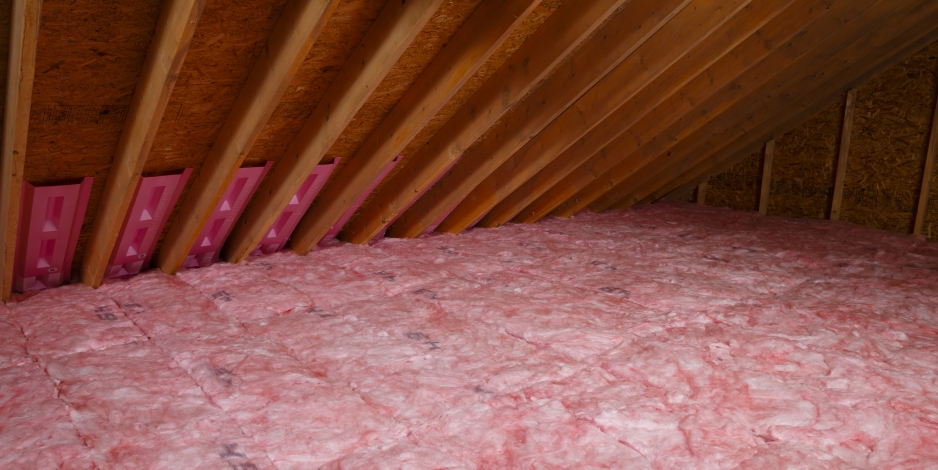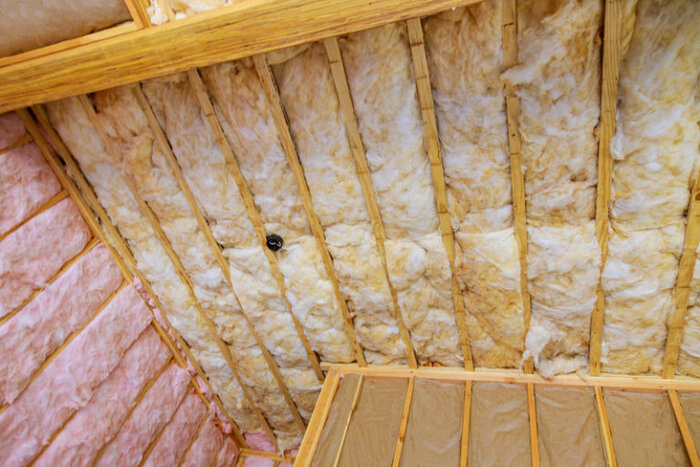Discover the Various Types of Attic Insulation and Their Distinct Advantages for Your Home's Power Performance

Fiberglass Insulation
Fiberglass insulation is one of the most generally utilized materials for attic insulation because of its excellent thermal efficiency and cost-effectiveness. Made up of tiny glass fibers, this material properly catches air, developing a shielding obstacle that helps maintain constant interior temperatures. Its high R-value per inch makes it specifically reliable at resisting warm transfer, which is critical for power conservation in homes.
Setup of fiberglass insulation is reasonably simple, commonly readily available in batts or loose-fill forms, fitting different attic setups. In addition, it is resistant and non-combustible to moisture, minimizing the threat of mold development. This toughness adds to its long life, making fiberglass a viable long-term investment for property owners.
Additionally, fiberglass insulation is often manufactured from recycled materials, which enhances its eco-friendliness. The material can additionally contribute to soundproofing, lessening noise transfer between spaces. While it is necessary to wear safety gear throughout setup to prevent inflammation from the fibers, the general advantages of fiberglass insulation, consisting of energy financial savings and environmental considerations, make it a preferred option for enhancing attic performance and promoting a comfy living environment.
Spray Foam Insulation
Spray foam insulation is a very efficient option for attic insulation, understood for its remarkable air sealing and thermal efficiency. This cutting-edge insulation product is composed of a mix of isocyanate and polyol material, which, when integrated, increases swiftly to load spaces and cavities in the attic room room. Its ability to follow numerous surfaces ensures a constant barrier versus air leakages, dramatically minimizing warm loss throughout colder months and warm gain during warmer periods.
Among the crucial advantages of spray foam insulation is its high R-value per inch, which suggests it offers outstanding thermal resistance in a relatively slim application. This is especially advantageous in attics where room is commonly limited. In addition, spray foam can assist minimize wetness build-up, lowering the danger of mold and mildew growth, which can be harmful to both the structure and indoor air high quality.
While the preliminary cost of spray foam insulation might be greater than conventional alternatives, its long-term power financial savings, coupled with boosted comfort and enhanced home value, make it a beneficial investment for house owners looking for improved power efficiency. Attic Insulation DFW. Overall, spray foam insulation stands out as an efficient service for enhancing attic room insulation
Cellulose Insulation

Cellulose insulation is a preferred option for Home Page attic insulation, largely composed of recycled paper items treated with fire retardants. This environmentally pleasant choice is recognized for its exceptional thermal performance, properly lowering heat transfer in both summer season and cold weather. The dense structure of cellulose allows it to fill up gaps and gaps in attic rooms, supplying a smooth obstacle versus air leaks.
One of the considerable benefits of cellulose insulation is its capability to resist mold and mildew and insects, owing to the fire resistant treatments made use of during manufacturing. In addition, it boasts a high R-value per inch, which converts into superior power efficiency. Homeowners can anticipate lower cooling and heating costs as an outcome of improved insulation.
Installment is typically completed with blowing loosened cellulose into the desired area, permitting for a reliable and quick process. This approach likewise lessens disruption to the existing structure. Moreover, cellulose insulation has a reasonably try here low environmental influence, as its manufacturing procedure utilizes recycled materials, contributing to lasting building techniques.
Rock Woollen Insulation
Amongst the various choices for attic room insulation, rock woollen, also called mineral woollen, stands out due to its outstanding thermal and acoustic performance. Made from natural or recycled materials, rock wool is produced by melting rock and spinning it right into fibers, causing a product that supplies superb insulation buildings.
Among the substantial benefits of rock wool insulation is its high R-value, which shows its efficiency in withstanding warm flow. This characteristic not just boosts power performance yet likewise adds to preserving a comfortable interior temperature level year-round. In addition, rock wool is inherently fireproof, making it a much safer alternative for homes as it can stand up to high temperature levels without melting or releasing toxic fumes.
Additionally, rock woollen insulation excels in soundproofing capacities, effectively minimizing sound transmission between areas and from outside sources. In general, rock woollen insulation gives a detailed solution for improving power effectiveness, safety and security, and comfort in property setups.
Glowing Barrier Insulation
Radiant barrier insulation works as an effective option for click over here now minimizing warm transfer in attic rooms, especially in warmer climates. This sort of insulation jobs by mirroring convected heat away from living areas, therefore decreasing the amount of warmth that enters a home throughout heat - Attic Insulation DFW. Typically composed of an extremely reflective product, such as light weight aluminum foil, radiant obstacles are installed in attic rooms, dealing with the roof, where they can intercept incoming heat from the sun
The main advantage of glowing obstacle insulation is its capacity to reduced air conditioning costs. By reflecting heat rather than absorbing it, radiant obstacles can aid maintain a more steady interior temperature, minimizing the workload on cooling systems. This efficiency translates into reduced energy expenses and increased convenience for home owners.
Along with power financial savings, glowing barriers can also add to improved interior air high quality. By decreasing heat buildup, they help decrease moisture levels, which can prevent mold and mildew development and improve overall air blood circulation. When set up correctly, radiant barrier insulation can be a vital addition to any type of energy-efficient home, making it a worthy factor to consider for home owners looking to boost their attic room insulation technique.
Conclusion
In final thought, understanding the different kinds of attic insulation-- fiberglass, spray foam, cellulose, rock woollen, and glowing barriers-- enables homeowners to make enlightened choices pertaining to energy effectiveness. By selecting the proper insulation material, considerable decreases in power prices can be achieved, along with improvements in interior convenience.

In verdict, recognizing the numerous kinds of attic room insulation-- fiberglass, spray foam, cellulose, rock woollen, and glowing obstacles-- enables homeowners to make informed choices pertaining to energy efficiency.